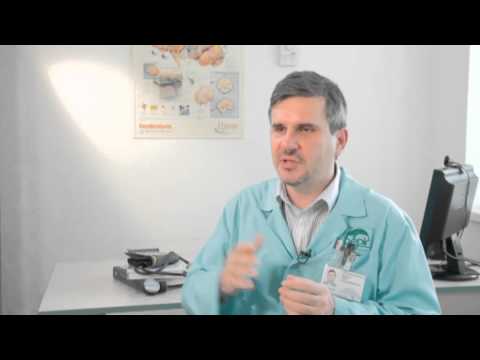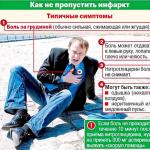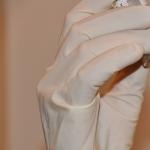Treatment after a stroke depends on which form of the disease has developed. There are 2 types of strokes: hemorrhagic and ischemic. Preparations are selected taking into account the standing of the patient. The first time after a stroke, the patient should be in the hospital under the supervision of doctors. Self-treatment at home is out of the question. Complications after a stroke can be very serious and life-threatening.
rehabilitation period
Ischemic. This pathology develops when the access of oxygen to the tissues becomes impossible due to vascular damage. The causes of ischemic stroke are:
- atherosclerosis;
- thrombosis;
- embolism.
Ischemic stroke is considered one of the leading causes of death in the population.
The main rule in therapeutic therapy after a stroke is to restore blood flow in damaged vessels and maintain the vital functions of the whole organism. The complex therapy for the treatment of ischemic stroke includes:
- the use of medications;
- the use of folk remedies;
- physiotherapy;
- psychotherapy.
During rehabilitation, the patient is taught how to restore lost skills, how to adapt to the limitations that arise after a stroke. The exact recovery period cannot be predicted. Much depends on the degree of damage to blood vessels in the brain. Doctors also prescribe treatment for concomitant diseases, if any. Rehabilitation involved:
- neurologists;
- speech therapists;
- psychiatrists-psychotherapists;
- physical therapy specialists.
With unqualified treatment and violation of medical prescriptions, the risk is high. Repeated attacks increase the likelihood of death. Therefore, it is not recommended to ignore the prescriptions of doctors. In addition to treatment, rehabilitation includes the correction of the patient's daily menu, the complete rejection of bad habits (smoking, drinking alcohol) and the prevention of further attacks.
Help of medicines
In the treatment of strokes, basic and differentiated therapy is distinguished. The base is prescribed for both ischemic and hemorrhagic stroke. Differentiated adapts to the nature of the stroke. Basic therapy is aimed at supporting the basic vital functions of the human body. This means that the patient is provided with adequate breathing, and with the help of the necessary drugs, cerebral circulation is maintained. It is very important to control and correct water-salt processes. The task of physicians is to reduce cerebral edema, to organize the prevention and treatment of pneumonia, if necessary.
- Vinpocetine;
- Pentoxifylline;
- Instenon;
- calcium channel blockers.
- Anaprilin;
- Atenolol;
- Amplodipine;
- Nifedipine;
- Captopril;
- Enalapril;
- Furosemide.
- Dexazon;
- Prednisolone;
- Reogluman;
- Furosemide;
- 15% mannitol solution.
According to statistics, 70% of all ischemic strokes occur due to thrombosis or thromboembolism, that is, the vessel is simply blocked by an atherosclerotic plaque or thrombus. In such cases, thrombolysis is performed, that is, tissue plasminogen activator is administered intravenously or intra-arterially. This procedure allows you to dissolve blood clots inside the vascular bed. Although thrombolysis is considered a simple procedure, there are a number of contraindications for its implementation.
To improve the rheological properties of blood in the acute period, hemodilution (intravenous infusion) is used. Medications used during this period:
Although these vasoactive drugs are widely used, the evidence for their clinical efficacy is currently uncertain. Undifferentiated treatment is aimed at the activity of the cardiovascular system. The most important principle is the control of blood pressure. If it is elevated, this is a provoking factor in repeated strokes. The indicators should not exceed the usual for each individual patient.
When taking medications, a sharp decrease in pressure should be avoided in order to prevent other complications. The antihypertensive drugs used have the following names:
Furosemide is a diuretic, therefore, when it is taken, Asparkam is additionally prescribed. If the patient is unable to take drugs orally, they are administered intravenously. In the event of arterial hypotension, a cardiotonic drug called Mezaton or Cordiamin is prescribed. If the condition cannot be stabilized, corticosteroids may be used. Hydrocortisone or Dexamethasone is given intravenously. If necessary, eliminate violations of the coronary circulation and heart rhythm.
Carrying out medical procedures
Immediately after a stroke, a person is provided with a patency of the respiratory tract, a toilet of the oral cavity and nose is carried out. This requires regular removal of secretions and vomit by suction. In some cases, intubation is carried out and the patient is transferred to artificial lung ventilation. In cases where pulmonary edema occurs, cardiac glycosides are administered, for example, Korglikon, Strofantin in combination with diuretics (diuretics).
In severe conditions, patients are prescribed broad-spectrum antibiotics of the cephalosporin group to prevent pulmonary pneumonia. To avoid congestion in the lungs, a stroke survivor should be turned from side to side or connect breathing exercises. But such procedures begin to be carried out only after the crisis has passed. In the first days, patients are shown complete rest.
Therapeutic therapy includes the use of solutions: saline Ringer-Locke, isotonic sodium chloride, glucose. In the acute period, the patient should receive dietary food rich in vitamins and proteins, low in animal fats and sugar. If it is impossible to swallow food, a nasogastric tube is inserted into the person. Diuresis and expiratory fluid loss should be monitored during treatment.
To prevent cerebral edema, corticosteroids are prescribed:

If the patient has a severe form of diabetes mellitus, intractable hypertension and other complications, then treatment with corticosteroids is prohibited. Vegetative functions should be monitored, which include the work of the intestines and urination. The patient may be prescribed laxatives, cleansing enemas. For problems with urination, a catheter is placed and uroseptic drugs are prescribed to prevent infection of the genitourinary system. An anti-decubitus mattress should be provided. The skin should be treated with antiseptic preparations.
What can be done at home?
After the crisis has passed, the patient is discharged from the hospital, but the rehabilitation period should continue at home. Mental disorders, behavioral changes, speech and movement disorders in a family member place a heavy burden on everyone else. Treatment of the consequences of this disease should begin with the preparation of the bed. If the patient cannot get up, then a hay mattress should be made to avoid bedsores.
When the condition improves, help the relative sit or stand for a while. Effectively on the state of health affects massage and exercise therapy. Atrophied limbs need to be developed as often as possible (2-3 times a day for several approaches). For support, you can use a walker, a stick, a cane, crutches - everything that is convenient for the patient himself.
As the condition improves, simple exercises should be done involving the arms, legs, shoulders, and hip joints.
After 3 months, the patient's condition may allow him to walk and climb stairs. Provide a relative with an emergency dialing phone so that in case of unforeseen circumstances he has a connection. Physical exercises should be aimed at gaining muscle mass. Therefore, after 6 months, a person is recommended to gradually abandon the devices used. With all classes, it is important to control blood pressure indicators. At home, speech therapy exercises should be performed to restore speech function.

The use of folk methods
The patient can continue treatment after a stroke at home using folk remedies. But doctors' prescriptions should not be ignored. All medications must be taken until the end of the course of treatment. In some cases, patients have to use antihypertensive drugs for the rest of their lives. To improve the functioning of the cardiovascular system, you can prepare tinctures and balms.
For the first recipe, you will need half an orange and half a lemon. Twist them through a meat grinder, add 2 tbsp. l. honey and give the patient 2 times a day for 1 tbsp. l. To avoid necrosis of nerve cells, alcohol should be made. 5-6 cones, which have seeds, pour alcohol and leave for 20 days. You need to take the tincture 1 time per day, 1 tsp, diluted in tea beforehand. For paresis of the extremities, a medicine of 2 lemons without peel, 2-3 heads of medium-sized garlic and honey is used. Mix all ingredients and consume 1 tsp. on an empty stomach
And some secrets...
Have you ever suffered from HEART PAIN? Judging by the fact that you are reading this article, the victory was not on your side. And of course you are still looking for a good way to get your heart working.
Then read what Elena MALYSHEVA says about this in her interview about natural methods of treating the heart and cleaning blood vessels.


